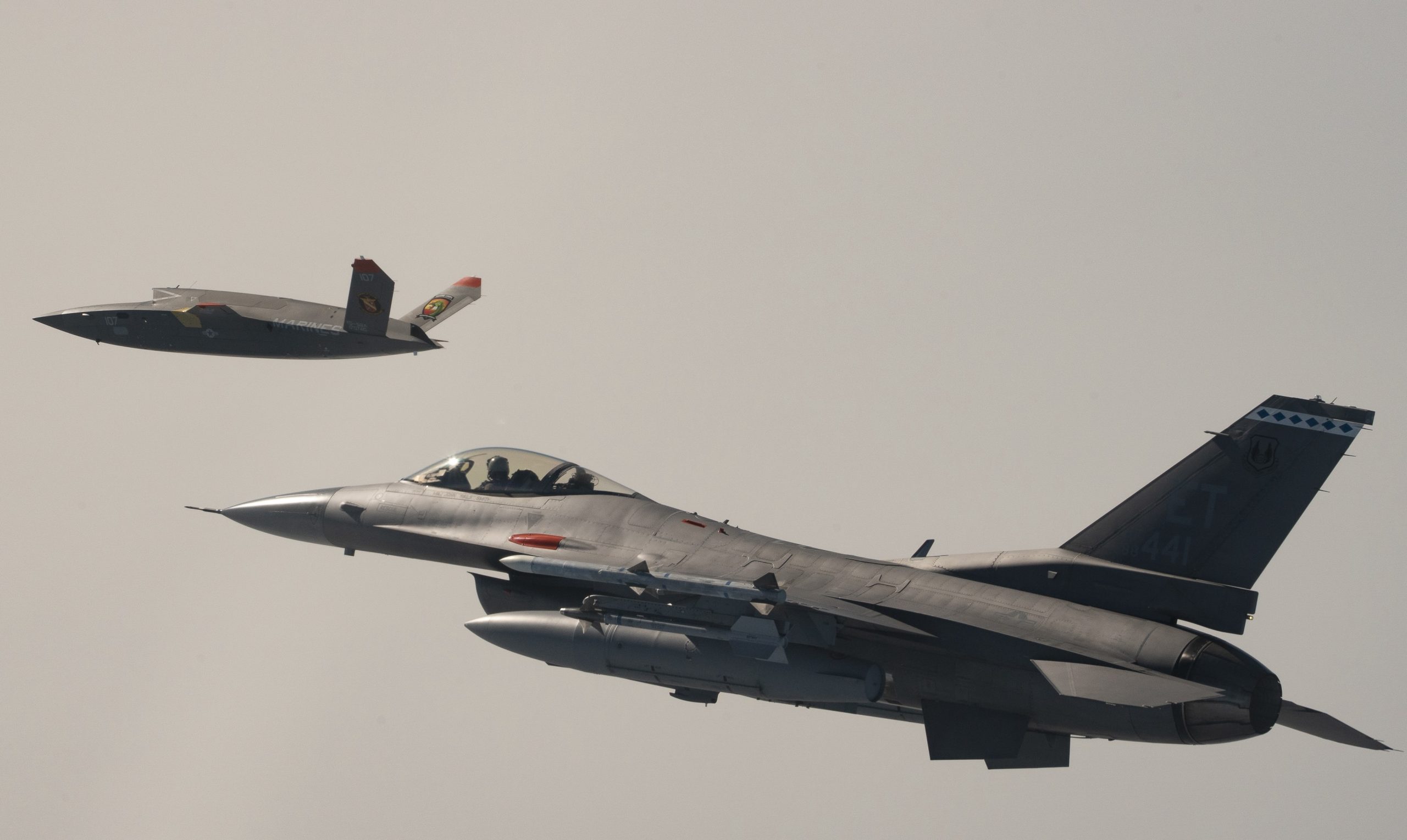
The Marine Corps conducted its first test flight of the Kratos XQ-58A Valkyrie unmanned aerial vehicle at Eglin Air Force Base, Florida, Monday.
The flight, conducted with support from the Air Force and Navy, is the latest Marine Corps test done as the service continues its shift towards new concepts set forward by former Commandant Gen. David Berger under Force Design 2030. As part of the service-wide plans, the service is to conduct Expeditionary Advanced Basing Operations over long distances against near-peer opponents.
“Testing the XQ-58 Valkyrie determines requirements for a highly autonomous, low-cost tactical UAS that compliments the need for agile, expeditionary and lethal capabilities in support of both the Marine Corps’ stand-in force operations in austere environments and the Joint Force,” said Lt. Col. Donald Kelly, from Headquarters Marine Corps Aviation Cunningham Group and Advanced Development Team, in a Marine Corps press release on the test.
Valkyrie performed six test flights, which evaluated the UAV’s ability to conduct intelligence, surveillance and reconnaissance (ISR), electronic support to manned platforms, the potential of using artificial intelligence-enabled platforms to assist combat air patrols and broader manned-unmanned teaming capabilities.
While the flight tests gathered information that would help inform future requirements, they also demonstrated the “continued joint innovation and experimentation opportunities” and “the agility that can be achieved through partnership,” said Scott Bey, a prototyping and experimentation portfolio manager at the Office of the Undersecretary of Defense for Research and Engineering.
The Valkyrie is mostly associated with the Air Force’s Loyal Wingman program, but the Marine Corps has taken a keen interest in a variety of systems under the service’s expansive experimentation efforts under Force Design 2030. Kratos’ drone can operate without a runway out to a range of about 3,000 nautical miles with a payload of sensors or weaponry.

The service ordered two Valkyries last December and received them this spring for testing under the Rapid Defense Experimentation Reserve program, which allows the services to test concepts with systems already in use in other arenas with an emphasis on the needs of Indo-Pacific Command. The two drones are meant for testing purposes via the Marine Corps Penetrating Affordable Autonomous Collaborative Killer – Portfolio (PAACK-P) program, which seeks to inform requirements for the Marine Air-Ground Task Force Unmanned Aerial System Expeditionary (MUX) Tactical Aircraft (TACAIR).
In January, the Navy also ordered two Valkyries for its own experimentation purposes, similar to those of the Marine Corps, with “sensor and weapon system payloads to accomplish the penetrating affordable autonomous collaborative killer,” USNI News previously reported.
The XQ-58A Valkyrie is one of several unmanned aerial systems being explored or invested in by the service. In August, Marine Unmanned Aerial Vehicle Squadron 3 (VMU 3) achieved initial operating capability with the Marine Corps’ new MQ-9A Reaper UAV. Marines have also been seen using V-BAT and the TRV-50 Tactical Resupply Unmanned Aircraft System during exercises in the Western Pacific.





